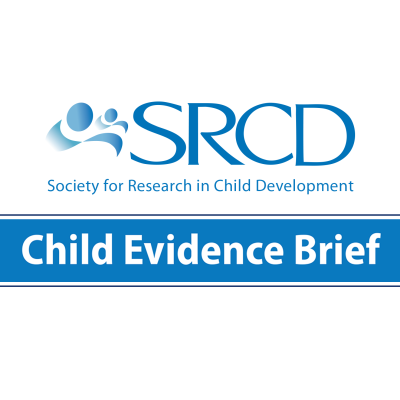Ensuring That Multilingual Children Benefit From Best Practices
Why Does This Matter?
Multilingualism is an international fact of life and a growing part of the United States, where almost 20 percent of the population is multilingual. There is an urgent need for research-based guidance in dealing with increasing numbers of multilingual children, specifically information on how to craft policy and design programs for those who can most benefit, especially in the early years. Through efforts in this area, children can become fluent in two or more languages and reap the benefits of dual- or multiplelanguage skills.
Policies and programs should be framed to identify and strengthen the contexts that best support language development in multilingual children.
Policy and Practice Implications
The quantity and quality of a child’s exposure to responsive conversation spoken by fluent adults predicts their language and literacy achievement. To ensure that children have long-term and enriched exposure to language when they come from homes where languages other than English are spoken—and knowing that learning multiple languages has cognitive, social, and potentially economic benefits—policymakers and practitioners should:
- Encourage parents and caregivers to speak with children in the language that comes most naturally, which will result in a richer and more diverse language environment for children;
- Explore opportunities to foster multilingual language development through the contexts and programs that touch many families with multilingual children, including: home visitation programs, health care (e.g., pediatric primary care), and early childhood care and education programs; and
- Develop and implement programs that expose children to high-quality input in English in the early years while at the same time supporting formal and informal opportunities for children to continue to develop competency in their home language(s).
What the Research Says
- Multilingual children in the United States often come from immigrant families that are disproportionately low income and are often exposed to risks low-income families face. Many fail to develop enough English to keep pace with peers or lose competence in the home language as it is gradually replaced with English.
- However, when children are raised in high-quality language environments where both first and subsequent languages are valued and used, learning multiple languages has cognitive, social, and potentially economic benefits.
- Children need to hear responsive, diverse, and complex talk about objects and events that interest them. Because it is best when such talk comes from native speakers, parents should be encouraged to speak the language(s) with which they feel most comfortable.
- Studies of children in environments that actively support multilingualism indicate that, if children are spoken to (with high-quality language) and learn to speak two languages, by about 10, they can do as well as monolingual children in both languages and experience the benefits of multilingualism.
Facts at a Glance
- In 2009, roughly 11.2 million children in the United States came from non-English-speaking homes, up from 4.7 million in 1980.
- Nearly 25% come from immigrant families; firstand second-generation immigrant children are the fastest-growing sectors of the U.S. child population.
- Multilingual families come from different ethnic groups and bring with them a diverse set of values, practices, and resources. Among immigrant parents of children under 6, the largest percentage comes from Central and South American, as well as Caribbean countries (64%); smaller percentages come from countries in Asia (23%), Europe and Canada (7%), and Africa and the Middle East (6%).
- More than 350 languages are represented within the U.S. multilingual population, but Spanish predominates (72%—8 million people—speak Spanish at home). More than 1.4 million speak Indo-European languages other than Spanish (e.g., French), more than 1.2 million speak an Asian or Pacific Islander language, and more than 400,000 speak other languages.
- The percentage of multilingual children is larger among the youngest in public education.
This brief summarizes a longer Social Policy Report, "Multilingual Children: Beyond Myths and Toward Best Practices," by Allyssa McCabe, Professor of Psychology at the University of Massachusetts Lowell; Catherine S. Tamis-LeMonda, Professor of Applied Psychology at New York University; Marc H. Bornstein, Senior Investigator and Head of Child and Family Research at the Eunice Kennedy Shriver National Institute of Child Health and Human Development; Carolyn Brockmeyer Cates, Assistant Professor of Pediatrics at New York University Medical Center; Roberta Golinkoff, Professor of Education at the University of Delaware; Kathy Hirsh-Pasek, Professor of Psychology at Temple University; Erika Hoff, Professor of Psychology at Florida Atlantic University; Yana Kuchirko, doctoral candidate at New York University; Gigliana Melzi, Associate Professor of Applied Psychology at New York University; Alan Mendelsohn, Associate Professor of Population Health and Pediatrics at New York University Medical Center; Mariela Paez, Associate Professor of Early Childhood Education at Boston College; Lulu Song, Assistant Professor of Early Childhood Education and Art Education at Brooklyn College, City University of New York; and Alison Wishard Guerra, Assistant Professor of Education Studies at the University of California San Diego.
